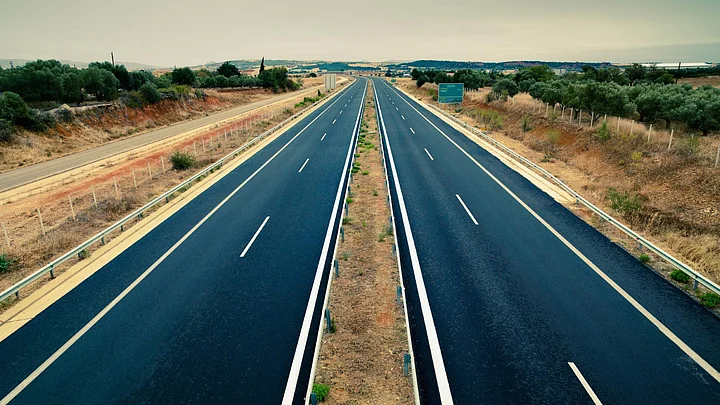Early indications of India’s foreign policy under the new government emphasise the importance of India’s neighbourhood. The presence of the leaders of Bangladesh, Bhutan, Nepal, Maldives, Mauritius, Sri Lanka and Seychelles at Prime Minister Modi’s swearing-in ceremony underscores this priority. This also marks a continuation of the trend set in 2014, when the SAARC member countries were first invited, and 2019, when the BIMSTEC member states participated.
The action has a two-pronged impact. First, it shows New Delhi’s deeper commitment to its neighbourhood, both land and maritime. Second, it signals New Delhi’s intention to balance its continental and maritime engagements in its neighbourhood. Achieving this balance is both crucial and strategically important, if India aims to foster regional integration.
India’s engagement in its neighbourhood, encapsulated in the ‘Neighbourhood First’ and ‘Act East’ policies, has been underpinned by a particular focus on infrastructure connectivity projects with a high emphasis on the construction and operationalisation of transport infrastructure, including railways, roads, bridges etc.
This is not only a focal point of New Delhi’s foreign policy but also crucial for regional stability and growth. However, the pace and effectiveness of implementing these links so far have revealed some discrepancies. The increased ambition in maritime connectivity compared to land connectivity continues to widen the integration gaps, particularly in the Bay of Bengal region, located at the heart of the Indian Ocean Region.
Ground-level assessment reveals that India will have to do much more to cut down costs, streamline logistics and improve efficiencies through these modes. This poses a challenge to India's aspirations as a regional leader. It is now opportune for New Delhi to rethink its approach to connectivity with the neighbourhood for the next ten years. This will include incorporating several ‘soft’ instruments in the neighbourhood connectivity strategy, to complement the development of land-based ‘hard’ infrastructure, both on the land and maritime front.
Connectivity Gaps
Important projects, such as the India-Myanmar-Thailand (IMT) Trilateral Highway and the Kaladan Multimodal Transit Transport Project (KMTTP), were envisioned in the 2000s to act as corridors to improve integration between South and Southeast Asia through India’s Northeast Region. Yet, these projects have faced successive delays, often symptomatic of larger political economy issues.
The Bangladesh-Bhutan-India-Nepal Motor Vehicles Agreement (BBIN-MVA) also exemplifies similar challenges. Despite the MVA’s potential to streamline transportation and boost economic activity across these borders, and a promising pilot run in 2015 between West Bengal and Tripura via Bangladesh, the initiative remains in limbo.
At the regional level, SAARC and its plans for a regional MVA and a railway network have been largely ineffective due to political disagreements and security concerns between India and Pakistan. On the other hand, BIMSTEC, which includes several SAARC members along with Thailand and Myanmar, holds promise. Yet, the Masterplan for Transport Connectivity is still far from making significant headway.
A Connectivity Strategy for the Next Decade
First, New Delhi's connectivity initiatives would gain from decentralisation, involving not just central ministries but also border states such as Uttar Pradesh, Bihar, West Bengal, and states in the Northeast Region to streamline movement. A prime example is the Suvidha Pass Facilitation System for Vehicles in West Bengal, a collaborative effort by the state government, the Land Ports Authority of India, Indian Customs, and the Border Security Force, which has significantly reduced the parking waiting time to a few hours and improved movement at Integrated Check Posts (ICPs).
Second, greater efforts are necessary for the harmonisation or mutual recognition of norms and standards for land connectivity among the Bay of Bengal countries, including other inland points of entry or exit such as dry ports.
Such disparities currently hinder projects like the IMT Highway and BBIN-MVA, with issues such as duplicated processes at land ports, insufficient digitisation, varying trade facilitation standards, poor enforcement of mutual recognition agreements in testing requirements, and lack of recognition of dry ports, all of which increase the cost and time of trade. New Delhi, while enforcing mutual recognition, should also actively support capacity building in neighbouring countries to align these norms and standards.
Finally, realising the full potential of regional trade and economic growth requires a collaborative approach with bilateral, multilateral, and private sector partners.
India, along with its neighbouring countries, needs to engage like-minded partners such as Japan, Australia, the European Union, and the United States, as well as coordinate with multilateral agencies such as the World Bank and the Asian Development Bank. Moreover, leveraging the private sector's expertise, resources, and innovative capabilities will be crucial in smoothing the cross-border trade processes.
Cooperation across these varied stakeholders is key to successful cross-border infrastructure projects, as evidenced by the private sector-driven success at the Sittwe terminal under the KMTTP. This integrative approach will be crucial for defining India’s connectivity strategy for the next decade.
(Riya Sinha is Associate Fellow, Centre for Social and Economic Progress, New Delhi. Views expressed are author’s own.)
(At The Quint, we question everything. Play an active role in shaping our journalism by becoming a member today.)
